 1996 Lada 2110 Dimensions, Size & Specs
1996 Lada 2110 Dimensions, Size & Specs
Measurements of the 1996 Lada 2110, engineered for optimal performance and comfort
| Dimensions | |
|---|---|
| Length: | 4277 mm168.4 in14.0 ft |
| Width: | 1676 mm66.0 in5.5 ft |
| Height: | 1430 mm56.3 in4.7 ft |
| Trunk Capacity (Max): | 450 liter15.9 cu ft |
| Weight Specifications | |
| Curb Weight: | 1010 kg2227 lbs |
| Maximal permitted Weight: | 1485 kg3274 lbs |
| Tire Specifications | |
| Rims Size: | 13-inch rims:
|
| Tire Size: |
|
The Lada 2110 is a compact sedan manufactured by the Russian automaker AvtoVAZ, produced from 1996 to 2003. It features a length of 4277 mm (168.3 inches), a width of 1676 mm (66.0 inches), and a height of 1430 mm (56.3 inches), positioning it as a practical and moderately sized family car for its era. With a curb weight of 1010 kg (2227 lbs) and a maximum weight of 1485 kg (3274 lbs), the Lada 2110 maintains a lightweight profile that supports efficient fuel consumption and easy maneuverability in urban environments.
The sedan offers a luggage capacity of 450 liters when the rear seats are folded, providing ample space for everyday needs and moderate cargo loads. Rolling on 5J x 13 rims fitted with 175/70 SR13 tires, the vehicle favors a balance between ride comfort and handling stability.
Throughout its production run from the mid-1990s to early 2000s, the Lada 2110 served as a reliable, affordable transportation solution primarily for the Russian domestic market. Its size and weight reflect typical characteristics of compact sedans from that period, making it comparable in footprint to other economy sedans. Whether navigating city streets or highway driving, the Lada 2110 offers a modest but practical package with straightforward engineering and easy maintenance.
Discover the standout features that make the 1996 Lada 2110 a leader in its class
Have a question? Please check our knowledgebase first.
The Lada 2110 sedan, produced from 1996 to 2003, has a length of 4277 mm (approximately 168.4 inches), a width of 1676 mm (about 66.0 inches), and a height of 1430 mm (around 56.3 inches). These dimensions give it a compact sedan profile suited for urban driving and easier maneuverability while maintaining interior space.
The curb weight of the Lada 2110 is approximately 1010 kilograms (2227 pounds), which refers to the weight of the vehicle without passengers or cargo but with necessary fluids. Its maximum weight, which includes passengers, cargo, and additional load, is 1485 kilograms (3275 pounds). This capacity ensures the car can carry a reasonable number of occupants and luggage without compromising safety or performance.
With the rear seats folded, the Lada 2110 provides a luggage capacity of 450 liters. This translates to about 15.9 cubic feet. This volume is typical for compact sedans of its era, allowing for increased cargo space when needed, making it practical for transporting bulker items or luggage for longer trips.
The Lada 2110 comes equipped with rim size 5J x 13 and tire size 175/70 SR13. These smaller 13-inch tires contribute to a firm ride quality and better fuel efficiency, suitable for the car's modest performance levels. The narrower tires improve maneuverability in urban environments and can handle a variety of road conditions common in areas where the vehicle was popular.
Given its length of 4277 mm (168.4 inches), width of 1676 mm (66.0 inches), and height of 1430 mm (56.3 inches), the Lada 2110 is compact enough to fit comfortably into a typical residential garage. Most standard garages accommodate vehicles up to about 5 meters (16.4 feet) in length and 2.5 meters (8.2 feet) in width, so the Lada 2110's size poses no parking or storage issues for average home garages.
Compared to previous Lada models before 1996, the Lada 2110 represents a more modern and slightly larger compact sedan. While earlier models like the Lada Samara were hatchbacks and smaller sedans, the 2110 offers a longer body at 4277 mm, which provides improved interior space and comfort. Its width and height are also optimized for better aerodynamics and road presence, making it more competitive for the 1990s sedan market segment.
In the late 1990s and early 2000s, the Lada 2110's compact sedan dimensions were quite typical. Compared to Western compact sedans like the Ford Escort or Volkswagen Jetta from the same era, the Lada 2110 is very similar in length and width but generally lighter due to simpler construction. Its smaller 13-inch wheels and modest height make it slightly more compact, which can be advantageous in tight urban settings common in Eastern European regions.
The Lada 2110 was designed as a practical, affordable sedan aimed at families and everyday commuters in Russia and surrounding markets. With its classic sedan design, modest engine options, and straightforward mechanical layout, it prioritized reliability and ease of maintenance. Typical uses included urban and suburban driving, with sufficient luggage space and seating for up to five passengers, making it versatile for daily tasks and light travel.
With a curb weight of about 1010 kg (2227 lbs), the Lada 2110 is relatively lightweight compared to many sedans from the same period. This lower weight typically leads to better fuel efficiency, as less energy is required to move the vehicle. It also makes the car easier to handle and more responsive in urban traffic. However, the lightweight design also means the vehicle's ride may be less insulated from road imperfections compared to heavier sedans.
Yes, the Lada 2110 featured a more aerodynamic and modern body design compared to earlier Lada generations with boxier shapes. The length of 4277 mm and width of 1676 mm helped provide increased interior space, especially for rear passengers and luggage, while maintaining a compact exterior footprint. These design improvements enhanced the car's usability for families and improved ride comfort, making it a more practical choice in its class for the late 1990s and early 2000s.
Discover similar sized cars.
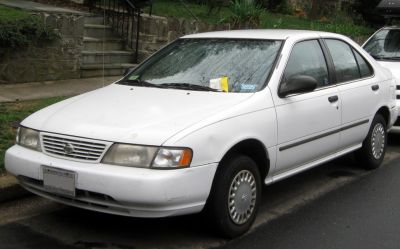
| Production: | 1994-1999 |
|---|---|
| Model Year: | 1995 |
| Length: | 4230 mm166.5 in |
| Width: | 1670 mm65.7 in |
| Height: | 1395 mm54.9 in |

| Production: | 2019-present |
|---|---|
| Model Year: | 2019 |
| Length: | 4300 mm169.3 in |
| Width: | 1700 mm66.9 in |
| Height: | 1460 mm57.5 in |

| Production: | 2017-present |
|---|---|
| Model Year: | 2018 |
| Length: | 4300 mm169.3 in |
| Width: | 1700 mm66.9 in |
| Height: | 1460 mm57.5 in |

| Production: | 2007-2013 |
|---|---|
| Model Year: | 2007 |
| Length: | 4300 mm169.3 in |
| Width: | 1690 mm66.5 in |
| Height: | 1460 mm57.5 in |
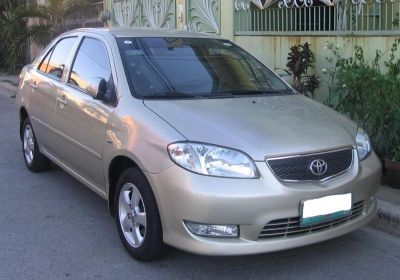
| Production: | 2002-2007 |
|---|---|
| Model Year: | 2002 |
| Length: | 4285 mm168.7 in |
| Width: | 1695 mm66.7 in |
| Height: | 1435 mm56.5 in |
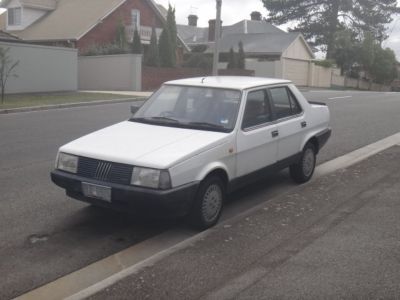
| Production: | 1983-1990 |
|---|---|
| Model Year: | 1984 |
| Length: | 4260 mm167.7 in |
| Width: | 1650 mm65.0 in |
| Height: | 1410 mm55.5 in |
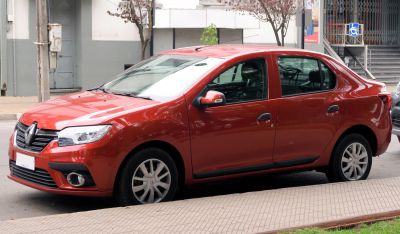
| Production: | 2017-present |
|---|---|
| Model Year: | 2017 |
| Length: | 4354 mm171.4 in |
| Width: | 1994 mm78.5 in |
| Height: | 1517-1529 mm59.7-60.2 in |
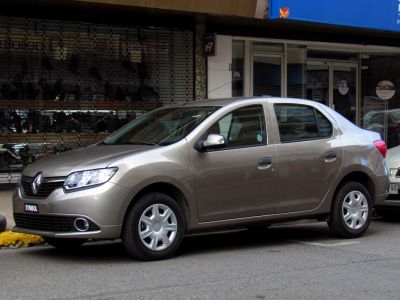
| Production: | 2013-2017 |
|---|---|
| Model Year: | 2013 |
| Length: | 4348 mm171.2 in |
| Width: | 1994 mm78.5 in |
| Height: | 1517 mm59.7 in |
